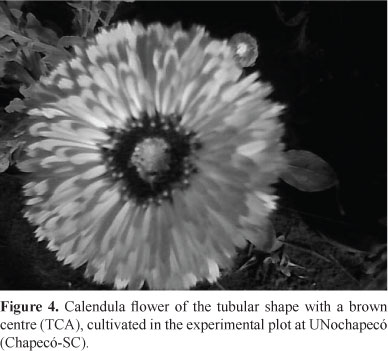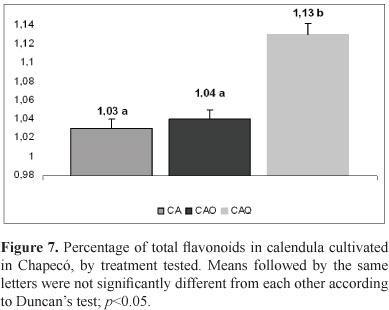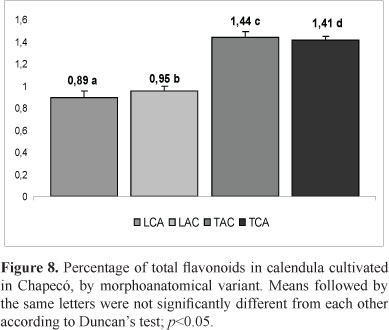The objective of this study was to examine the influence of cultivation treatments on plant development, morphology and flavonoid content in Calendula officinalis L., Asteraceae. The cultivation treatments were liming (LIM), liming + organic fertilizer (LORG) and liming + NPK chemical fertilizer (LCHEM). The experiment was completely randomized with sixty repetitions and the means were compared by ANOVA and Duncan's test (significance of 95%). The results show that LORG and LCHEM produced greater plant development compared with LIM treatment. The LORG treatment also produced plants with greater homogeneity, fresh mass, and higher numbers of flowers per plant, but lower biomass of flower produced by each individual. Morphoanatomical variations were also observed with tubular flowers with yellow centres (TCA) and tubular flowers with brown centres (TAC) that produced a higher content of flavonoids (1.41 and 1.44% respectively), compared with ligulate flowers with yellow centres (LCA) and ligulate flowers with brown centres (LAC) (0.89 and 0.95% respectively). The chemical compounds in the flowers of calendula viewed by thin-layer chromatography showed that the treatments did not have any influence on the qualitative chemical profile of the plant. However, cultivars of calendula that underwent treatment LCHEM produced a greater quantity of total flavonoids (1.14%) against 1.04% for LORG and 1.03% for LIM.
Calendula officinalis; cultivation treatments; plant development; flavonoid content











